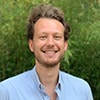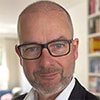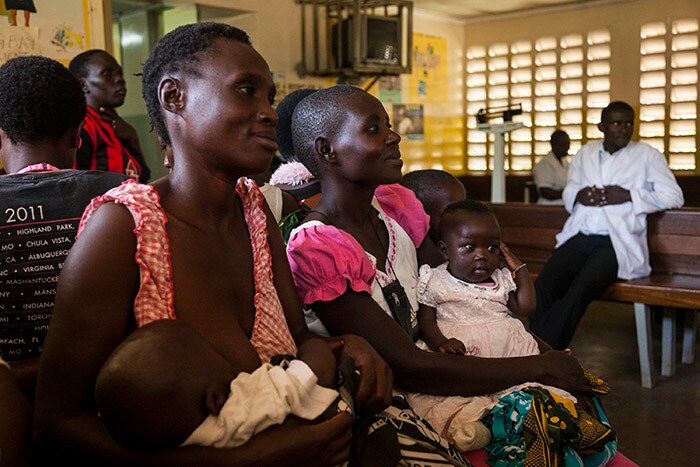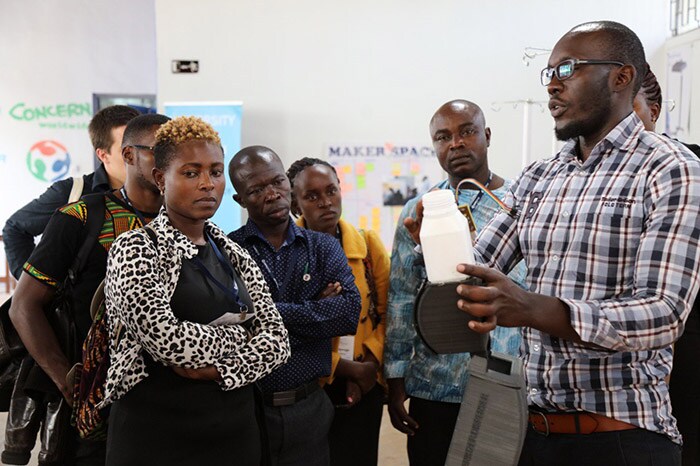Sep 22, 2020
Philips Foundation, Philips and UNICEF highlight locally enabled innovation in Kenya’s mother and child care at UNGA 75
Amsterdam, the Netherlands – Philips Foundation, with its mission to provide access to quality healthcare for disadvantaged communities through innovation, and UNICEF today highlighted the results of a joint initiative to fund and support the ‘Maker Innovation’ project in Kenya – a ‘change the system from within’ solution to achieving better mother, newborn and child health in low-resource environments. The project, supported by Philips offering its prototyping and manufacturing expertise, aims to offer much greater long-term benefits than one-off initiatives or imported healthcare solutions. The project actively supports UN Sustainable Development Goals SDG3: Ensure healthy lives and promote well-being for all at all ages and SDG9: Build resilient infrastructure, promote sustainable industrialization and foster innovation. Combining the imagination and creativity of undergraduate students at the University of Nairobi, the real-world experience of doctors and nurses at Kenyatta National Hospital, and innovation and entrepreneurship coaching provided free-of-charge by Philips, the Maker project has already resulted in the development of 19 medical device prototypes. Seven of these have been judged suitable for further development, with two of them already being tested in clinical trials and evaluated by the Kenya Bureau of Standards (KEBS). Notable examples include a suction machine for clearing the airways of newborn babies and a delivery cushion that supports traditional Kenyan birthing positions. In addition to direct funding from Philips Foundation and UNICEF, and the coaching provided by Philips, development of these prototypes was facilitated by the existence of two prototyping labs at Nairobi University – an engineering-oriented MIT Fab Lab that enables students to access an array of CNC (Computer Numerical Control) rapid prototyping equipment, and the Nairobi Maker Space, which brings together students, doctors and nurses to share and critique ideas. Locally based multidisciplinary teams are then assembled to put the most promising ideas into action. The active involvement of Kenyatta National Hospital ensures a needs-based approach that reflects the local context in which the solutions will be used.
The importance of local design and manufacture is also highlighted by the fact that Kenya does not have the infrastructure or level of training needed to repair imported equipment, which means much of it lies idle.
Aly Syed
System Consultant at Philips Innovation Services
“When designing medical devices that require a water or electricity supply, for example, it cannot be assumed that these are reliably available in Kenya,” said Aly Syed, System Consultant at Philips Innovation Services, and one of the Philips coaches. “The importance of local design and manufacture is also highlighted by the fact that Kenya does not have the infrastructure or level of training needed to repair imported equipment, which means much of it lies idle.” A next step would be to focus on commercializing solutions, by developing appropriate business plans and establishing manufacturing and service facilities to enable their widespread deployment. The Maker project is the result of a collaboration between Philips Foundation and UNICEF, together with Concern Worldwide, Philips Research Africa, the University of Nairobi, Kenyatta National Hospital and Gearbox. This extended collaboration with UNICEF, the world’s leading agency for humanitarian and developmental aid to children worldwide, highlights the Philips Foundation’s commitment not only to SDG3 and SDG9, but also to SDG17: Revitalize the global partnership for sustainable development. “Access to healthcare is a key driver of sustainable socio-economic development. Despite tremendous progress, there is still a substantial unfulfilled need for high-quality healthcare that is affordable, equitable and efficiently managed,” said Ronald de Jong, Chairman of the Philips Foundation. “The piloting initiatives that the Philips Foundation drives and supports, are aimed at transforming healthcare systems. Collaborating with complementary partners – such as UNICEF and Concern Worldwide alongside respected institutions in Kenya – we can make and create lasting value.” The lessons learned in the 4-year Maker Innovation project will help the Foundation and its strategic partners to further explore new ways of using health technology to strengthen and innovate elements of the health delivery system and the wider healthcare ecosystem in underserved communities across the globe. Learn more from project participants sharing their journey of how to improve the health of mother, newborn and child in a resource-constrained environment.
About Royal Philips
Royal Philips (NYSE: PHG, AEX: PHIA) is a leading health technology company focused on improving people's health and enabling better outcomes across the health continuum from healthy living and prevention, to diagnosis, treatment and home care. Philips leverages advanced technology and deep clinical and consumer insights to deliver integrated solutions. Headquartered in the Netherlands, the company is a leader in diagnostic imaging, image-guided therapy, patient monitoring and health informatics, as well as in consumer health and home care. Philips generated 2019 sales of EUR 19.5 billion and employs approximately 81,000 employees with sales and services in more than 100 countries. News about Philips can be found at www.philips.com/newscenter.
About the Philips Foundation
The Philips Foundation is a registered charity that was established in July 2014 – founded on the belief that innovation and collaboration can help solve some of the world’s toughest healthcare challenges for the underserved and make essential impact. Reflecting our commitment to United Nations Sustainable Development Goals 3 (Ensure healthy lives and promote well-being for all at all ages) and 17 (Revitalize the global partnership for sustainable development), the mission of the Foundation is to reduce healthcare inequality by providing access to quality healthcare for disadvantaged communities. The Philips Foundation fulfills its mission by deploying Philips’ expertise, innovative products and solutions, by collaborating with key partners around the world (including respected NGOs such as UNICEF, Amref and ICRC), and by providing financial support for the collaborative activities. More information on the Philips Foundation can be found at www.philips-foundation.com
About UNICEF Netherlands
UNICEF stands for children's rights, as laid down in the United Nations Convention on the Rights of the Child. As the children's rights organization of the United Nations, UNICEF brings structural improvement to the lives of millions of children. In the Netherlands, we give extra help to children uprooted, to children who receive poor nutrition or whose mental resilience is at stake. Children's rights: For every child. More information on UNICEF Netherlands can be found at www.unicef.nl
Topics
Contacts

Yannick Eshuijs
Philips Foundation Tel.: +31 6 1852 6633
You are about to visit a Philips global content page
Continue
Joost Maltha
Philips Global Press Office Tel: +31 6 10 55 8116
You are about to visit a Philips global content page
ContinueMedia assets
Press releases
Get our press releases by e-mail
You are about to visit a Philips global content page
Continue










